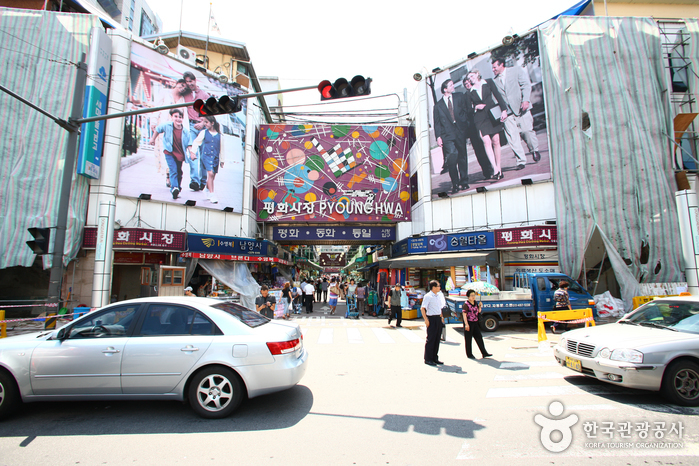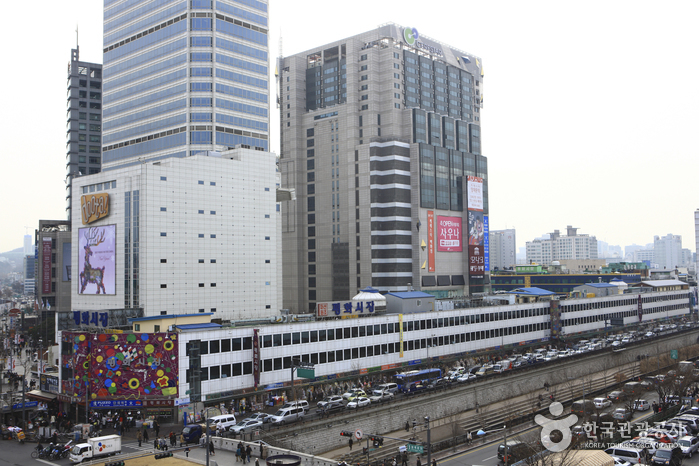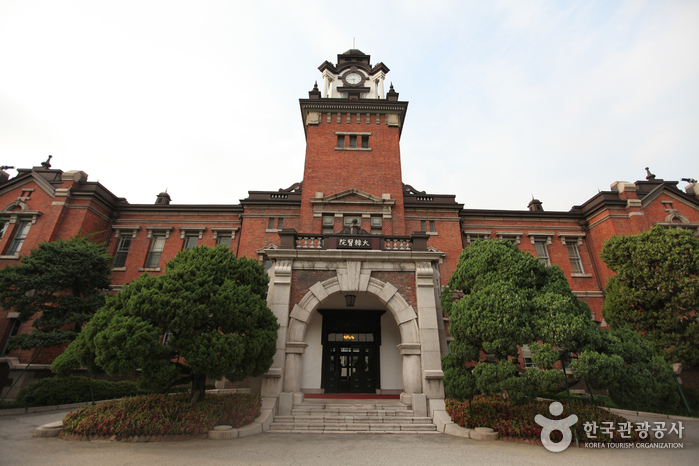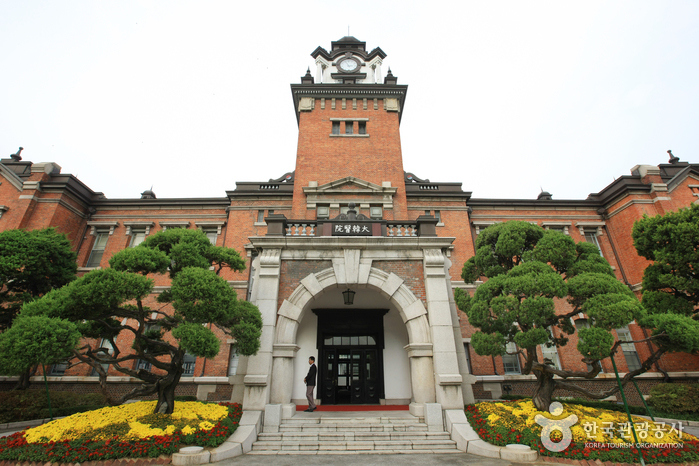Pyounghwa (Pyeonghwa) Fashion Town (서울 평화시장)
3.5Km 2025-01-06
274, Cheonggyecheon-ro, Jung-gu, Seoul
+82-2-2265-3531~3
The Pyounghwa Fashion Town market in Dongdaemun has been selling fashion clothing and accessories for over 50 years ever since the end of the Korean War. It was here that in 1953 North Korean refugees started selling clothes made from US army uniforms. Their market was then named Pyounghwa, which means peace, in the hope that no other wars would be fought on Korean soil. The Pyounghwa Fashion Town was therefore the beginning of the 30,000 stores that now make up Dongdaemun Fashion Town, which is seen as one of the global centers of the fashion industry.
Spread over a large area, this historical fashion market is divided into several districts, the ‘Gu Pyounghwa Fashion Town’ is the oldest, and there is also the ‘Shin Pyounghwa Fashion Town’, ‘Dong Pyounghwa Fashion Town’, and ‘Cheong Pyounghwa Fashion Town’.
Dongdaemun Shopping Complex·Dongdaemun Shopping Town (동대문 종합시장·동대문 쇼핑타운)
3.6Km 2025-06-30
266 Jong-ro, Jongno-gu, Seoul
+82-2-2262-0114
Dongdaemun Shopping Complex is one of Korea’s most well-known markets. It was founded in December 1970 as the largest of its kind in Asia and has maintained that status for the last 40 years. Browsing the plethora of shops, you can find fabric and clothing following all the latest global fashion trends. Dongdaemun Shopping Complex continues to build up its reputation as a hub of international design.
The Museum of Medicine (서울대학교병원의학박물관)
3.6Km 2024-03-18
101 Daehak-ro, Jongno-gu, Seoul
The Museum of Medicine is located in the building of the former Daehan Medical Center, the oldest modern hospital in Korea. It is a medical museum that provides a comprehensive view of the development of modern medicine in Korea, the history of medical devices, and the transformation of Seoul National University Hospital. Through permanent and special exhibitions, the museum showcases medical artifacts and documents related to the history of medicine.
Aeum (에움)
3.6Km 2024-03-26
36 Seogang-ro 11-gil, Mapo-gu, Seoul
Aeum is a fusion and traditional dessert cafe in a quiet alley between Sogang University and Hongik University in Seoul. Wooden interiors with muted colors create a neat atmosphere, and there are no signboards or menus on the outside or inside, so visitors can enjoy drinks and desserts in a quiet and relaxing setting. Coffee drinks, including pour-over coffee, are available, and there are many desserts as it's a traditional dessert cafe. The cafe also created a new dessert menu to cater to today's tastes after launching a pop-up store.
Raised rice cake, a traditional Korean dessert, and shaved ice are especially famous. The raised rice cake comes in cherry pepper, sesame, matcha, and chestnut flavors. The shaved ice comes as sweet red bean, apple cinnamon, dried persimmon, and sorbet flavors. Recipes and plating are designed to make Korean desserts easy for modern people to enjoy.
CU - Changjeon Forest Road Branch [Tax Refund Shop] (cu창전숲길점)
3.6Km 2024-06-27
25, Wausan-ro 32-gil, Mapo-gu, Seoul
-
Doota Mall (두타몰)
3.6Km 2025-10-23
275, Jangchungdan-ro, Jung-gu, Seoul
Doota Mall is a must-visit shopping destination that represents Dongdaemun-the center of K-fashion and culture in Seoul. Doota offers a true one-stop shopping experience across fashion, beauty, lifestyle, and dining-from K-designers, sportswear, women and men's apparel to a wide variety of cafes and restaurents. Open until midnight, Doota welcomes intenational travelers with special gifts and exclusive benefits.
Seoul Daehan Hospital (서울 대한의원)
3.6Km 2021-12-23
101, Daehak-ro, Jongno-gu, Seoul
+82-2-2148-1842
Daehanuiwon (Daehan Medical Center) is an antique two-story brick building within the grounds of Seoul National University Hospital. It was established under the direct administration of the Uijeongbu (State Council), combining the Gwangjewon (under the Home Ministry), Gyeongseong Medical School and the Korean Red Cross Hospital (under the Royal Household).
Built in the Madubong Hill area, this location where Hamchunwon, the outer garden of Changgyeonggung Palace, once stood in 1484 (15th year of King Seongjong), was also once the site of Gyeongmogung Palace, where King Jeongjo enshrined the mortuary tablet of his birth father Crown Prince Sado Seja in 1776 (the year King Jeongjo ascended to the throne).
These places that held importance for the royal family were destroyed as the Japanese built Gyeongseong Empire University in its place. In 1907, with the announcement of the plan to establish Daehan Medical Center, construction began on the main building, seven wards and affiliated buildings. Construction was completed in November 1908.
The Daehan Medical Center opened in Gwangjewon, but upon Japanese colonization in 1910, its name was changed to the Japanese Viceroyalty Hospital. In 1926, it was included as a part of Gyeongseongjeguk University to become a university hospital. Since the liberation of Korea in 1945, it has been a hospital affiliated with Seoul National University.
Olive Young - Doota Branch [Tax Refund Shop] (올리브영 두타)
3.6Km 2024-04-19
4F-51, Doosan Tower Bldg., 275, Jangchungdan-ro, Jung-gu, Seoul
-
Arirang 331 - Doota Branch [Tax Refund Shop] (아리랑331 두타)
3.6Km 2024-04-18
4F-028, 275, Jangchungdan-ro, Jung-gu, Seoul
-
National Geographic - Doota Branch [Tax Refund Shop] (내셔널지오그래픽 두타)
3.6Km 2024-04-18
B1F #05, 275, Jangchungdan-ro, Jung-gu, Seoul
-







![Olive Young - Doota Branch [Tax Refund Shop] (올리브영 두타)](http://tong.visitkorea.or.kr/cms/resource/99/2878699_image2_1.jpg)
![Arirang 331 - Doota Branch [Tax Refund Shop] (아리랑331 두타)](http://tong.visitkorea.or.kr/cms/resource/00/2878700_image2_1.jpg)
![National Geographic - Doota Branch [Tax Refund Shop] (내셔널지오그래픽 두타)](http://tong.visitkorea.or.kr/cms/resource/04/2878704_image2_1.jpg)
 English
English
 한국어
한국어 日本語
日本語 中文(简体)
中文(简体) Deutsch
Deutsch Français
Français Español
Español Русский
Русский